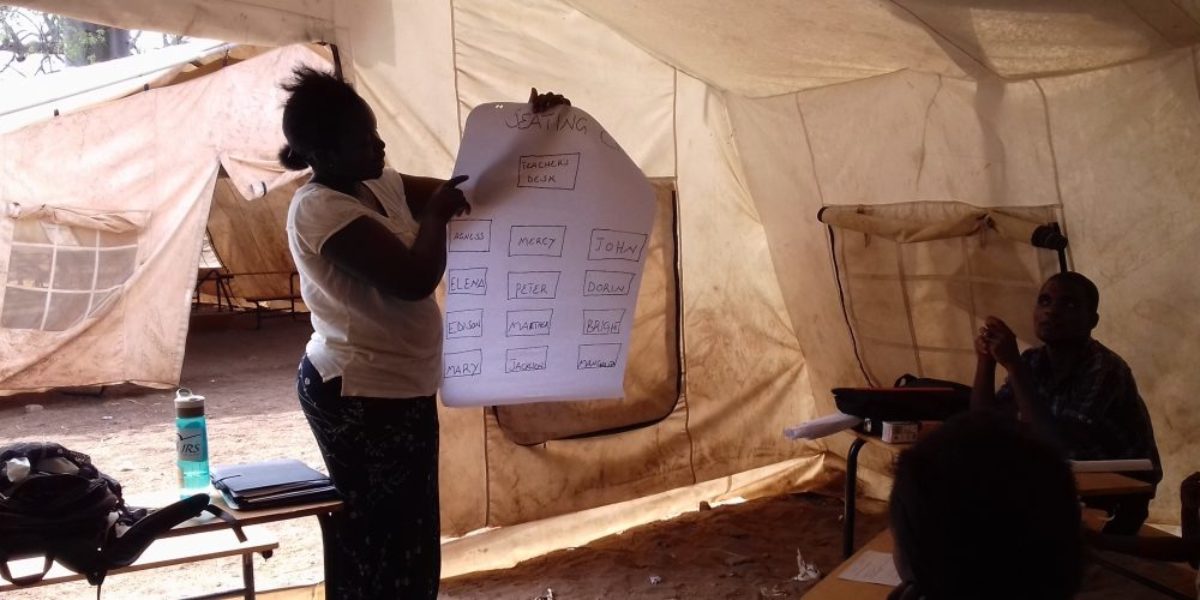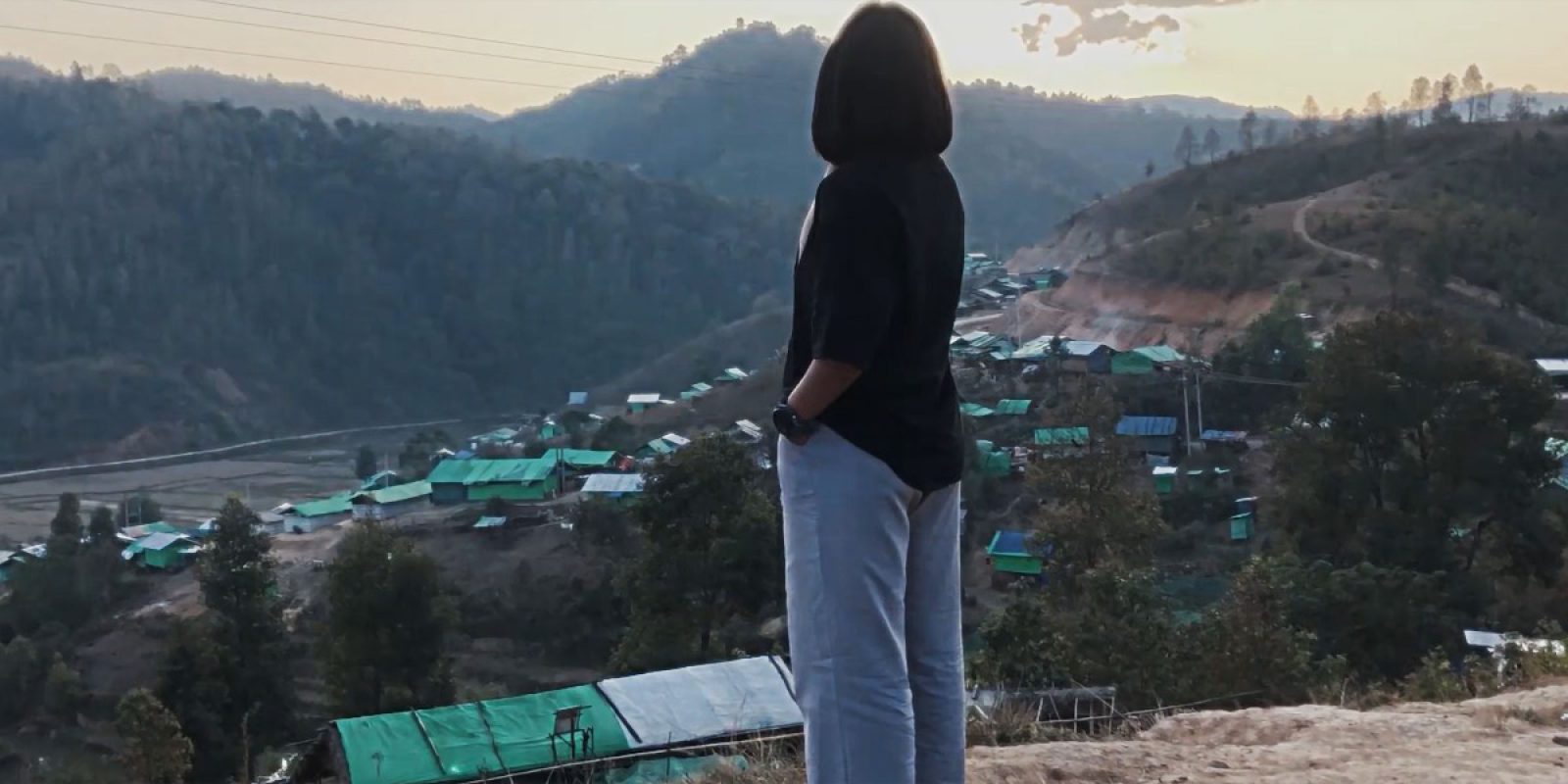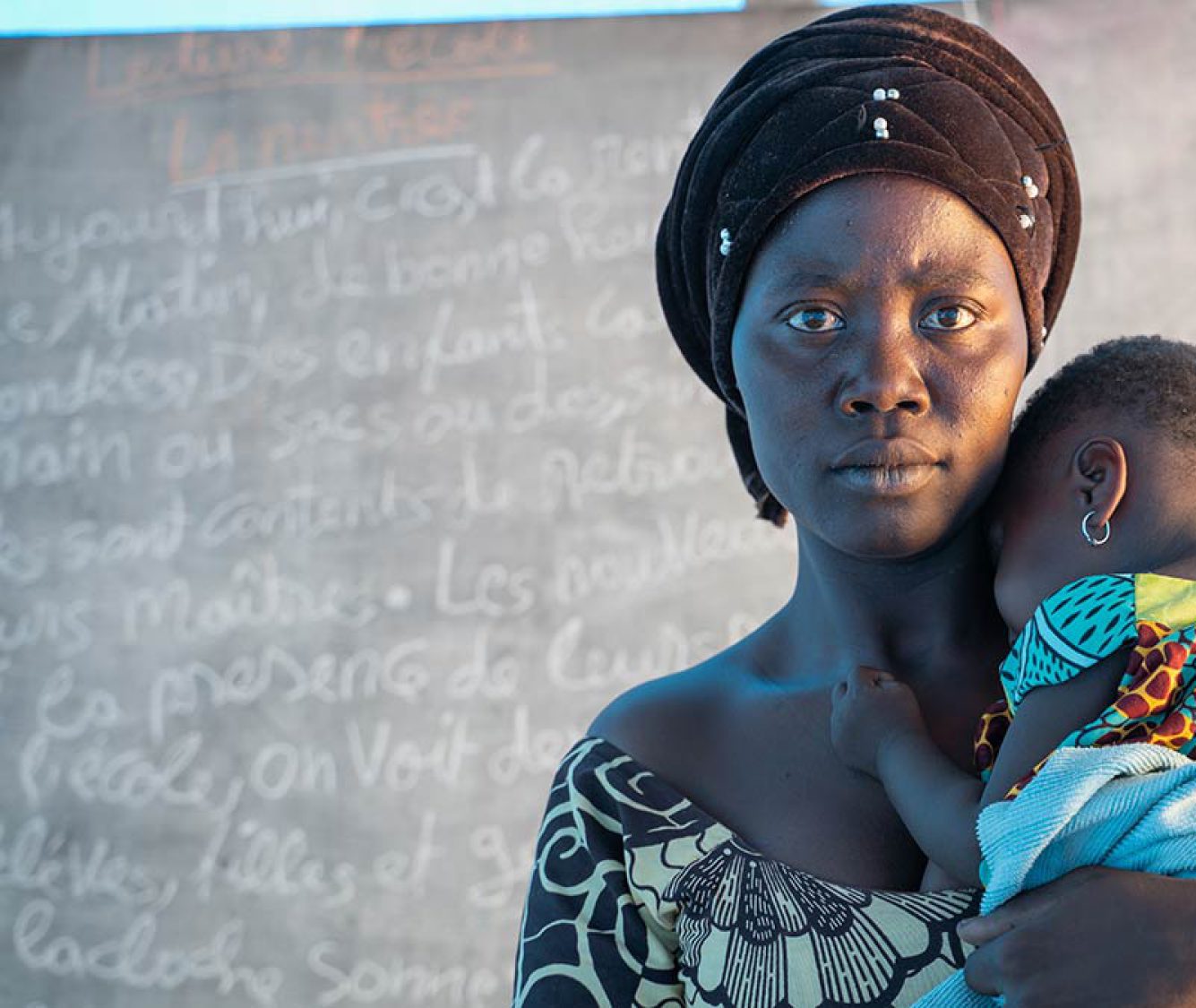Malawi: Teacher training in context
12 December 2016|Greg St. Arnold, JRS Regional Education Coordinator in Eastern and Southern Africa.

Lilongwe — In late 2015, about 12,000 Mozambicans crossed the border to Malawi to seek refuge from political upheaval and violence in their home province. Though many have now returned home, about 2000 have remained in Malawi due to the ongoing unrest. These refugees have been settled in a small village called Luwani, whose previous population numbered just a few hundred Malawians.
In early 2016, JRS partnered with the local primary school in Luwani to develop a year-long “catch up” program to boost the skills of the newly arrived children and aid their integration into the primary school. This program uses Malawi’s own accelerated learning curriculum, called Community Based Education, or CBE. It is implemented by community volunteers who have no formal teacher training but possess a desire to teach and help their communities.
When I first met McDonald, the spokesperson for the eight CBE teachers, he was adamant about what was needed: more training. The CBE program calls for three weeks of pre-service training for teachers, but due to the emergency situation, the team had received only five days. After the week, they were dispatched to their respective tents, awaiting the arrival of up to 90 children in each class.
As I learned these details, it was difficult to know where, and how, to begin. The school schedule was not conducive to long in-service trainings: asking the CBE facilitators to cancel classes so they could receive training meant that about 200 children would be out of school those days. Many would likely still come to the primary school grounds, where the CBE classrooms were located, and their unsupervised presence would prove a distraction to the ongoing primary school classes. Realizing that full-day in-service trainings weren’t possible, I proposed that we carry out the trainings in two-hour blocks over several days, after the day’s classes had dismissed.
Coming from a teaching background myself, I knew this was a tough sell. A full day of teaching is hard work. And already the CBE team had agreed to extend the length of their classes so their dismissal time aligned with the end of the primary school day – without additional compensation. I was asking them to commit even more of their time. I expected a difficult negotiation. But without hesitation, they agreed.
The “when” being firmly established, I turned my attention to the far more consequential question of the “what”: what to begin training with. In order to get an idea, I scheduled a visit to the CBE class tents before the trainings. I did class observations and sat down with the CBE team afterwards to hear about their experiences and needs. After doing so, I settled on a starting point: social emotional learning and classroom management. By emphasizing the importance of a welcoming, safe classroom, I thought we could address the foremost student needs during this time of disruption: safety, security, and a sense of normalcy.
With a focused target for training, I next dove into the teacher training pack materials. I consulted the session on Child Protection – there I found resources for teaching about social emotional learning. I also found some very helpful guidance on addressing corporal punishment. This was a topic I felt needed to be addressed, but I was unsure of how to do so. I had never discussed it with teachers before, and I wanted to be sure the language and tone I used was appropriate and effective. I studied the training pack materials closely and for that part of the training, used the language almost verbatim. We had a healthy discussion of the topic and the overall message came across clearly: corporal punishment was not to be used in our CBE classrooms.
Next I turned to some specific sections on classroom management methods. I found a list of classroom management techniques that I changed slightly to a self-assessment. I then led the team through the self-assessment and let them choose which methods of those listed they would like to try to implement in their classes. The next day, we had a work period so they could prepare to implement their method. Several teachers decided to post their classroom rules prominently in their tents. This led to some great discussions about which rules were most important, the ideal number of rules, and how best to communicate them to students. Another teacher confessed that she still had not learned her students’ names. She decided to do an activity with them in which they would make a tri-fold nameplate with their name and a picture of something they liked to do: this would allow her to learn more about each of them and provide her with a mnemonic device to remember each student by. We closed this round of training with each team member presenting their idea to the group and receiving feedback and questions. I encouraged them to continue discussing the new methods in the coming weeks, sharing what worked and what didn’t so the team could learn from one another.
Although I was initially dubious that we could achieve much in the short time frame for training, by doing some pre-training prep work and pulling from several sections of the training pack, I was able to come up with a program that covered a wide area of topics but allowed for meaningful learning and application.



